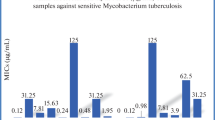Abstract
Diethyl-2,2′-bipyridine-3,3′-dicarboxylate (3 or L) reacts with RuCl3 · 3H2O to give cis-(Cl)-[Ru(L)2Cl2] · H2O (4) and structure of the complex was determined by spectral (IR, 1H-NMR), and mass spectroscopic data, elemental analyses and X-ray crystallography. The structure is solved in triclinic, space group p-1 with a = 10.658 (2), b = 12.446 (3), c = 14.186 (5) Å, α = 104.856 (3), β = 108.704 (3), γ = 94.973 (2)°, V = 1693.2 (8) Å3, Z = 2 with final R = 0.012. The geometry of the complex is shown to be a distorted octahedral with four nitrogens of two 2,2′-bipyridyl ligands in two different planes with Ru–N distance as 2.021 (2)−2.071 (3) Å. The cis-position is occupied by two chloride atoms with Ru–Cl distance as 2.4156 (12) and 2.4167 (13) Å. The trans-axial Cl2–Ru1–N and Cl1–Ru1–N4 angles are respectively, 172.42 (7) and 174.12 (7)°. A weak hydrogen bonding is observed between the two chlorides and hydrogens of neighbouring molecule [C–H···Cl distance as 2.72, 2.77 (4) Å]. A second type of weak hydrogen bonding is also observed between the oxygens of carboxylate groups and hydrogens of a neighbouring molecule [C–H···O distance as 2.53, 2.56 and 2.34 (4) Å].
Graphical Abstract
The structure of anti-tubercular precursor complexes, cis-(chloro)-[N,N′-bis-(diethyl-2,2′-bipyridine-3,3′-dicarboxylate)]ruthenium(II) monohydrate is solved by single crystal X-ray diffraction analysis which reveals geometry of the complex to be a distorted octahedral with four nitrogens of two 2,2′-bipyridyl ligands in two different planes. The cis-position is occupied by two chloride atoms.




Similar content being viewed by others
References
Cole Hamilton DJ (1980) J Chem Soc Chem Commun 1213. doi:10.1039/c39800001213
Choudhury D, Cole Hamilton DJ (1982) J Chem Soc Dalton Trans 1985
Tanaka K, Morimoto M, Tanaka T (1983) Chem Lett 901. doi:10.1246/cl.1983.901
Ishida M, Tanaka K, Morimoto M, Tanaka T (1986) Organometallics 5724
Haasnoot JG, Hinrichs W, Weir O, Vos JG (1986) Inorg Chem 25:1440. doi:10.1021/ic00243a018
Che C-M, Leung W-H (1987) J Chem Soc Chem Commun 1376. doi:10.1039/c39870001376
Goldstein AS, Drago RS (1991) J Chem Soc Chem Commun 21. doi:10.1039/c39910000021
Collomb-Dunand-Sautier N, Deronzier A, Ziessel R (1994) Inorg Chem 33:2961. doi:10.1021/ic00091a040
Ishida M, Fujicki K, Omba T, Ohkubo K, Tanaka K, Terada T, Tanaka T (1990) J Chem Soc Dalton Trans 2155. doi:10.1039/dt9900002155
Ishida M, Tanaka K, Tanaka T (1987) Organometallics 6:181. doi:10.1021/om00144a033
Morgan JL, Buck DP, Turley AG, Collins JG, Keene FR (2006) Inorg Chim Acta 3(359):888. doi:10.1016/j.ica.2005.06.036
Wu B-Y, Gao Li-H, Duan Z-M, Wang K-Z (2005) J Inorg Biochem 3(99):1685. doi:10.1016/j.jinorgbio.2005.05.012
Liu Y-J, Chao H, Tan L-F, Yuan Y-X, Wei W, Ji L-N (2005) J Inorg Biochem 2(99):530. doi:10.1016/j.jinorgbio.2004.10.030
Ju H-X, Ye Y-K, Zha J-H, Zhu Y-L (2003) Anal Biochem 2(313):255. doi:10.1016/S0003-2697(02)00625-5
Mazumder UK, Gupta M, Karki SS, Bhattacharya S, Rathinasamy S, Sivakumar T (2005) Bioorg Med Chem 13(20):5766. doi:10.1016/j.bmc.2005.05.047
Ben Hadda T, Sam N, Le Bozec H, Dixneuf PH (1999) Inorg Chem Commun 2(10):460. doi:10.1016/S1387-7003(99)00112-4
Hadda TB, Akkurt M, Baba MF, Daoudi M, Bennani B, Kerbal A, Chohan ZH (2008) Anti-tubercular Activity of Ruthenium(II) Complexes with Polypyridines. J Enzyme Inhib Med Chem 1–7. doi:10.1080/14756360802188628
Fair CK (1990) MolEN. An interactive intelligent system for crystal structure analysis. Enraf-Nonius, Delft
Spek AL (1997) HELENA. Program for the handling of CAD4-Diffractometer output SHELX(S/L). Utrecht University, Utrecht
Altomare A, Burla MC, Camalli M, Cascarano GL, Giacovazzo C, Guagliardi A, Moliterni AGG, Polidori G, Spagna R (1999) J Appl Cryst 32:115. doi:10.1107/S0021889898007717
Sheldrick GM (1997) SHELXL97. Program for the refinement of crystal structures. University of Göttingen, Germany
Fujihara T, Kobayashi A, Iwai M, Nagasawa A (2004) Acta Crystallogr E60:m1172–m1174
Eckhard IF, Summers LA (1973) Aust J Chem 26:2727
Acknowledgments
N. Sam and M. Daoudi are grateful to the ‘Projet Globale de Recherche de l’Université Mohammed Premier’ and ‘PROTARS I’ project for financial support.
Author information
Authors and Affiliations
Corresponding author
Rights and permissions
About this article
Cite this article
Toupet, L., Dixneuf, P.H., Akkurt, M. et al. Crystal Structure of Antitubercular Complex: cis-(chloro)-[N,N′-bis-(diethyl-2,2′-bipyridine-3,3′-dicarboxylate)]ruthenium(II) Monohydrate. J Chem Crystallogr 39, 423–427 (2009). https://doi.org/10.1007/s10870-008-9495-7
Received:
Accepted:
Published:
Issue Date:
DOI: https://doi.org/10.1007/s10870-008-9495-7




